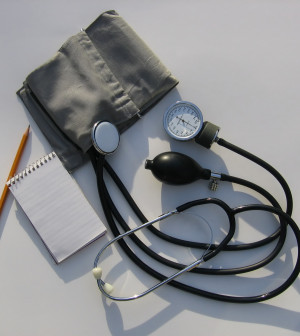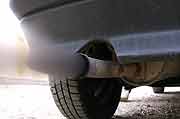- Skip Storing This Everyday Product in the Fridge Door
- Green Tea + B3 Pairing May Boost Brain Health
- Navigating Your Midlife Crisis: Embracing New Possibilities
- City Raccoons Showing Signs of Domestication
- Mapping the Exposome: Science Broadens Focus to Environmental Disease Triggers
- One Week Less on Social Media Linked to Better Mental Health
- Your Brain Changes in Stages as You Age, Study Finds
- Some Suicide Victims Show No Typical Warning Signs, Study Finds
- ByHeart Formula Faces Lawsuits After Babies Sickened With Botulism
- Switch to Vegan Diet Could Cut Your Greenhouse Gas Emissions in Half
Nonwhites Exposed to More Air Pollution: Study


Nonwhite Americans are exposed to 38 percent higher levels of nitrogen dioxide air pollution than whites, a new study shows.
Nitrogen dioxide comes from sources such as power plants and car exhausts, and this type of air pollution is associated with asthma and heart disease, the researchers said.
They examined nitrogen dioxide levels in cities across the nation and used U.S. Census data as well. They found that in most areas, lower-income nonwhites have higher exposure than higher-income whites. On average, race is more important than income in explaining differences in nitrogen dioxide exposure, study authors report.
The investigators also found that the largest white/nonwhite differences in exposure to nitrogen dioxide in descending order were in New York, Pennsylvania, Illinois, Michigan and New Jersey.
The urban areas with the largest differences were New York/Newark, Philadelphia and Bridgeport/Stamford, Conn., Boston and Providence, R.I.
The impact of breathing air heavier with nitrogen dioxide could amount to an estimated 7,000 extra deaths from heart disease each year among nonwhites, the researchers estimated.
The findings were published in the April 15 issue of the journal PLoS One.
“We were quite shocked to find such a large disparity between whites and nonwhites related to air pollution,” study co-author Julian Marshall, a civil engineering associate professor in University of Minnesota’s College of Science and Engineering, said in a university news release.
“Our study provides a great baseline to track over time on important issues of environmental injustice and inequality in our country,” he added.
“Our findings are of broad interest to researchers, policymakers and city planners,” study co-author Lara Clark, a civil engineering Ph.D. student in the College of Science and Engineering, said in the news release. “The next step in the research would be to look at why this disparity occurs and what we can do to solve it.”
More information
The U.S. National Library of Medicine has more about the health effects of air pollution.
Source: HealthDay
Copyright © 2025 HealthDay. All rights reserved.










